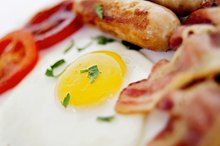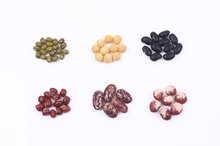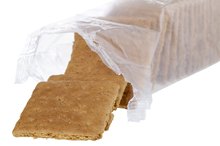Low-Carbohydrate & Low-Starch Foods
Carbohydrates come in three different forms: sugars, starches and fibers. When a food label lists total carbohydrates, it includes all of these three. Starch is a type of carbohydrate -- primarily found in starchy vegetables like potatoes and winter squash, grain products and dried beans and legumes. Starches are sometimes referred to as complex carbohydrates.
Paying attention to the starchy carbs you eat can be a healthy way to manage your blood sugar and lose weight.
Low-Carb, Low-Starch Protein
Most animal proteins, such as meat, poultry, fish and eggs, are free of carbohydrates, and thus starches. Although most shellfish and bivalves -- such as oysters and mussels -- as well as organ meats contain small amounts of carbs, it isn't starch. For example, 6 ounces of calves liver contains about 9 grams of net carbs -- the total digestible carbs, calculated by subtracting fiber from total carb count -- and 2 ounces of steamed mussels contain 4 grams. Extremely low-carb diets, such as the induction phase of Atkins, ask you to limit intake of these foods to 4 ounces or less per day.
Dairy can be a good source of protein, and all products are low in starch, though not all versions are low in carbohydrates. For example, 1 cup of milk contains about 12 grams of net carbs, but most types of cheese have just trace amounts of carbs total. Cream, butter, sour cream and half-and-half are low in carbs and starch. Yogurt, without any sweetener, can be a moderately low-carb food with 5 grams per 4-ounce serving.
No-Carb Fats and Flavorings
What Can I Eat on a No Carb Diet?
Learn More
Pure fats, such as cooking oils and butter, contain no carbs and thus have no starch. Other healthy fats include nuts, seeds and avocado.
Nuts and seeds are usually low in carbs per ounce. For example, 24 whole almonds contain just 3 grams of net carbs, and 2 tablespoons of hulled sunflower seeds contain 2 grams. The small amount of carbs they do contain are mostly fiber and starch.
Avocado has 2 grams of net carbs per half of a typical Hass variety, making it a low-carb, low-starch food. Spices contain few, if any carbohydrates, as do vinegar, mustard and mayo.
Produce That's Low-Carb
Watery, fibrous vegetables, including lettuce, cucumbers and celery, are low in starch and carbohydrates -- but contain a good amount of fiber. Vegetables don't have to be green to be low in carbs and starch, either. For example, 1/2 cup of raw cauliflower has around 2 grams of net carbs, and 1/2 cup of chopped raw red pepper has 3 grams. Onions, garlic, mushrooms and summer squash also qualify as low-carb/low-starch.
Most fruits aren't low in carbs or starch. But, the high fiber content in some berries makes them relatively low in net carbs. Small servings of raspberries and blackberries are often included in low-carb diets as they contain about 3 grams of net carbs per 1/2 cup.
Foods to Avoid on a Low-Carb, Low-Starch Diet
Zero Net-Carb Foods
Learn More
All types of pasta, bread and rice -- whether whole-wheat, brown or white -- should be avoided when you're limiting carbs and starches. Breakfast cereal and oatmeal are grain-based foods heavy in starch and carbs. Peas, corn, white and sweet potatoes, winter squash, pumpkin, cassava and taro are starchy, high-carb vegetables. Foods that aren't technically "bread" but still contain lots of carbs and starch are pizza, pastries, muffins, cookies and cake.
While foods such as salad dressing or fat-free condiments and sauces don't seem like they'd be high in carbohydrates, they often have added sugar and fillers that raise the carb count. Reading nutrition labels is one of the best ways to determine if a food contains minimal carbs.
Related Articles
References
Writer Bio
Andrea Cespedes is a professionally trained chef who has focused studies in nutrition. With more than 20 years of experience in the fitness industry, she coaches cycling and running and teaches Pilates and yoga. She is an American Council on Exercise-certified personal trainer, RYT-200 and has degrees from Princeton and Columbia University.








